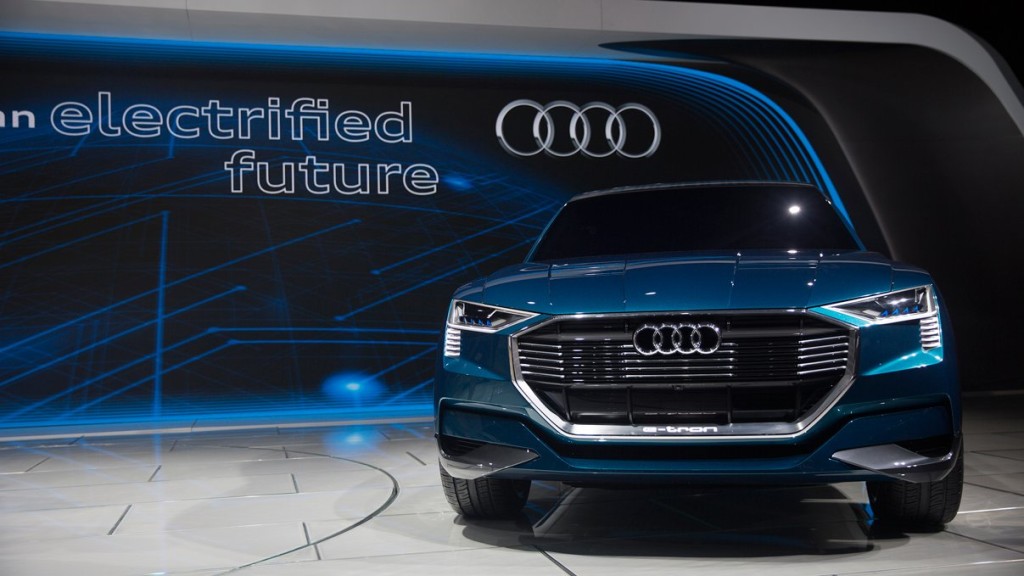The L.A. Auto Show will open its doors to car enthusiasts Friday at the Los Angeles Convention Center, marking the start of this season s U.S. auto shows. Around 50 vehicles will debut at the L.A. show this year in the performance, midsize crossover, electric and high-technology categories. Car companies like Ford, Volkswagen and Chevrolet spent over $100 million this year in advertising, and to reach the masses, these budgets are likely to remain the same through 2016.
However, over and above the traditional, well-proven ways of marketing cars through advertising, PR and product placement, we re also seeing a clear trend toward innovation marketing. What is innovation marketing We picked three prime examples of how car manufacturers took advantage of the spotlight to highlight their vision for the future rather than the traditional route of highlighting the features of their current products.
Hyundai
The U.S.-spec 2017 Hyundai Elantra sedan made its debut at the L.A. auto show, too. However, it s the Korean automaker s new smart phone app that stole the show in terms of PR. The company shows that it knows its customers well, and that almost no one ever looks at paper manuals anymore. So they announced its new augmented-reality digital owner’s manual. The Hyundai Car Care app for Android or iOS will be receiving the new augmented-reality features in an update coming soon.
The way it works is after the customer downloads the app and indicates what model Hyundai car they own and what options they’ve chosen (such as Tech package, Sport package), owners will be able to point their phone or tablet’s digital camera at the car and, after a few moments, have the app recognize the vehicle and overlay clickable information points onto the image of the car.
The augmented-reality points appear over the front and rear of the vehicle, in the engine bay, over the seat controls and on the dashboard. Considering millennials today spend hours every day glued to their screens, a car app like this doesn t just save paper and space in the glove compartment, but it s also indicative of what is to come in terms of marketing as the industry is thinking about how they can innovate in unexpected areas.
Audi
While the German premium brand has two performance vehicles making North American debuts the 2016 S8 Plus and 2017 R8 V10 Plus, and the 2016 RS7 making its world debut the company spent most of their time talking about something else: Electric cars.
In a challenging year for Audi and VW coming off the diesel emissions matters, Scott Keogh, President of Audi of America, focused on the future when addressing reporters. For Keogh, 2016 will be the year when electric cars finally become mainstream, and in addition to debuting its deeper jump into the hybrid category with the 2016 Audi A3 Sportback e-tron. Keogh also said that in 10 years, one out of four Audi cars sold in America will be fully electric.
How will this be achieved What’s key is Audi s e-tron quattro concept, an all-electric luxury-class SUV that will go into general production in early 2018. Another big goal in marketing going forward is educating consumers to change their perception about electric vehicles. This will do two things for Audi: show that the company is, in fact, a good company serious about the health of our planet, while showing their brand is innovative.
Volvo
https://youtube.com/watch?v=xYqtu39d3CU
The Scandinavian-turned-Chinese car company has always been at the forefront of safety, but this year it’s focusing on the self-driving car. Like Hyundai, Volvo has done a smart life hack here. According to Volvo’s research, the average American spends 26 minutes driving to work. So it s not an accident (pun intended) that Volvo chose to reveal its vision for how American s could better spend that time.
Volvo research indicates that most people will use autonomous drive on their way to work, during the boring parts of the commute like stop-and-go traffic on the highway. So they’re working on a self-driving car concept to take back that time stuck in a traffic jam. But this “time machine” won’t have a flux capacitor, but an auto-pilot that can be turned on-and-off just like your cruise control.
Without thoroughly detailing how it’s going to work, it’s safe to say that it’s still far away from becoming mainstream reality. The vision of what drivers will do when they don’t have to focus on driving will most likely be watched more than anything related to products and features currently on the market.
